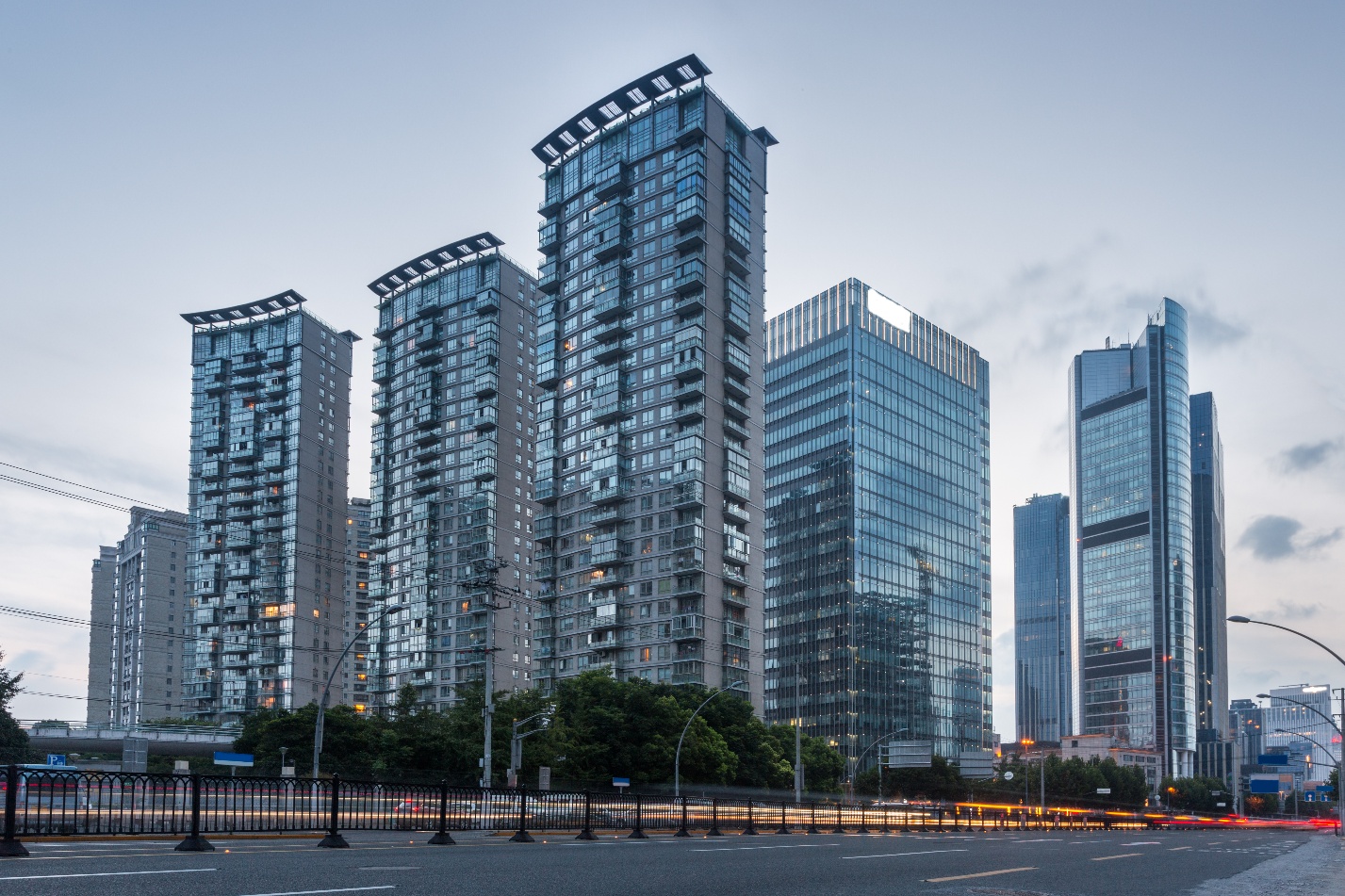Buying an apartment building can help your portfolio produce consistent cash flow.
The process of investing in an apartment complex is also relatively easy, even for first-timers, and there are fewer barriers to entry than you might expect.
Still, buying a commercial apartment isn’t something to rush into.
All real estate investments come with risk, and multifamily apartment buildings are no exception.
We want to help you avoid common mistakes and position yourself for a strong start.
So in this blog, we’re diving deep into how to buy an apartment complex and how to get a loan for an apartment building.
Is buying an apartment a good investment?
Yes, it can be. Multifamily investment apartments can generate stable passive income and allow you to build wealth even if you’re using financing.
But the reality is more complex, and many first-timers only learn that after they’ve closed their first deal.
So, before we talk about how much down payment you need for an apartment or how much it costs to build an apartment building, you must know what you’re really getting into as an investor:
- Property isn’t liquid. You can’t sell real estate overnight (even in a hot market). If you need access to that capital fast, you could run into trouble.
- Markets and economies move in cycles. Real estate doesn’t always go up (and neither does the economy).
- Buying takes time. You’ll need to understand how to compare deals and use financial models to figure out whether a property will perform the way you expect.
- Real estate can absolutely build wealth, but it rewards preparation and long-term thinking more than speed.
Understand the risks before you start. One of the fastest ways to lose money on a rental is assuming that it will bring in more income than it actually does.
To protect your finances:
- Always use a rental property calculator or spreadsheet to model out the deal before you commit.
- Don’t let big repairs like an HVAC failure or plumbing issue catch you off guard. Create a capital reserve fund for emergencies.
- Stress test your projections by modeling worst-case vacancy scenarios. You still have to pay for landscaping, taxes, and your mortgage even if you can’t fill a unit as quickly as planned.
- Don’t throw every last dollar into your first deal. Make sure you’ve got 6 to 12 months of personal savings and are still contributing to your retirement accounts.
- Boost your credit to 740 or above before applying for a loan. This can help you secure better rates and loan terms.
Read our blog on how to analyze multifamily investments for more information.
How much does it cost to buy an apartment complex?
It depends on where you’re buying and what type of property you’re targeting, of course.
But no matter what you’re buying, you’ll need cash for:
- The down payment
- Closing costs
- Any repairs,
- Plus a buffer in case rent doesn’t come in as expected.
Some lenders even require you to keep six months of expenses in reserve before they’ll approve your loan.
This financial cushion shows them that you’re prepared to handle short-term hiccups without defaulting.
How much does it cost to build an apartment complex?
National averages range from $150 to $400 per square foot, which translates to about $75,000 to $600,000 per unit (depending on finishes and design).
Costs are higher for Class A properties in major metro areas and for high-rise construction.
You’ll also need to budget for land, permits, soft costs, and a contingency fund.
Related blog: Private Lenders Are More Interested In Lending Multi-Family Deals
How to buy an apartment building step by step
Now that you know what to watch out for and how much you can expect to spend, let’s get to the exciting part:
How do you buy an apartment complex?
Your first multifamily investment will go more smoothly if you prepare both mentally and financially.
It doesn’t matter whether you’re buying a small apartment complex or a fully managed high-rise building.
You’ll want to cover your bases before you make an offer.
Tip #1: Start saving for your down payment.
The average down payment on an investment apartment is higher than what you’d pay for a primary residence.
Most lenders expect at least 20% to 25% down. The more you put in, the better your loan terms.
Tip #2: Decide: Do you want to manage the property yourself?
Being a landlord means handling all tenant issues and the occasional midnight call. If that doesn’t sound appealing, you can hire a property manager to take care of the day-to-day, but this will eat into your profits.
Tip #3: Don’t rule out out-of-town properties.
Your best deal might NOT be around the corner.
In fact, plenty of successful multifamily investors live in expensive coastal cities but own properties in more affordable markets across the country.
Long-distance investing can work (even for first-timers) if you have the right team and systems in place.
Tip #4: Compare cash deals with financing.
Some properties are inexpensive enough that buying with cash can be an option. Don’t worry —even if you go that route, you can always refinance later.
If you’re planning to finance from the start, get pre-qualified.
Lenders will look at your credit score (aim for at least 680), job history, income, debt load, and available cash.
Tip #5: Research the market, not just the property.
A great building in the wrong neighborhood won’t perform well.
Look at city-wide trends like job growth, population changes, rent prices, vacancy rates, and crime statistics.
Check school quality, walkability, and housing supply. You can more confidently project returns when you understand the area.
Tip #6: Know how to run the numbers.
Use a pro forma statement to estimate a building’s income, subtract out expenses (including vacancy loss, maintenance, and management fees), and calculate your expected net cash flow.
Other helpful metrics include:
- Cap rate = Net operating income / Property value
- Cash-on-cash return = Annual cash flow / Total cash invested
- 1% rule = Monthly rent / Purchase price (higher than 1% is better)
These formulas won’t tell you everything, but they’ll keep you grounded when comparing properties.
Related blog: Understanding Internal Rate of Return (IRR) & Multifamily Real Estate Development
Tip #7: Put together a real estate team you trust.
You’re not just buying a home when you’re buying an apartment building — you’re actually building a business.
You need to have access to professionals who understand investment properties, including a real estate agent familiar with rentals and a lender that can give you flexible financing solutions
Tip #8: Don’t stay stuck in research mode.
Analysis is useful and prudent, but you’ll need to act but at some point. It’s time to make an offer once you’ve built your team, chosen a market, and run the numbers,
Many first-time investors start with a turnkey rental that’s already rehabbed and tenant-occupied.
But if you’re comfortable with renovation projects, a fixer-upper can work, too, as long as the numbers make sense.
Bonus Tip: Build a reserve fund early.
Surprise expenses are part of real estate ownership, so set aside money not just for closing but also for unexpected roof repairs and appliance replacements.
Try to contribute a percentage of your rental income each month to a separate emergency fund.
How to finance your first multifamily investment
- Conventional loans are issued by banks and credit unions. They typically require strong credit and a larger down payment of 20% to 25%. Terms are competitive, but the approval process can be slow, so these loans are less suitable for time-sensitive deals.
- Fannie Mae and Freddie Mac multifamily loans include small loan programs tailored to newer investors buying stabilized properties. Rates are fixed and competitive, and underwriting is relatively streamlined. For larger deals, both agencies offer programs like Freddie Mac’s conventional financing and Fannie Mae’s Delegated Underwriting and Servicing, which are better suited to experienced investors focused on long-term holds.
- FHA and HUD-backed loans like HUD 223(f) and 221(d)(4) come with low interest rates and high loan-to-value ratios, plus long amortization periods. but the requirements are strict and the approval process tends to move slowly.
- CMBS loans are based on a property’s income instead of the borrower’s credit. They can provide access to large loan amounts and longer terms, but they’re complex and hard to modify after closing, so they are better suited to experienced investors with a strong support team.
Bridge loans & hard money loans for multi family apartment buildings
- Bridge loans give you fast access to capital and are built for multifamily investors who need to beat out competing buyers or quickly renovate/reposition a building before refinancing. Say you’ve found a multifamily property that needs cosmetic updates to boost rent. A bridge loan can give you the money to close fast and improve the property, and then refinance into a longer-term loan once the value’s increased.
- Hard money loans work similarly: approval is fast and underwriting focuses more on the deal than on your credit score. This can be a strong option if you have a thin credit file or if your income is too unconventional for traditional lenders.
These loans do cost more (interest rates and fees are typically higher) but they can make sense for experienced investors with a clear plan. For example, if you’re purchasing a distressed property and plan to renovate and refinance within a few months, the short-term expense may be worth it.
Here’s more detailed information on rate terms and qualifications for multifamily homes.
Ready to buy your first multifamily property?
At Private Capital Investors, we specialize in fast, flexible financing solutions—whether you’re eyeing a turnkey rental or a value-add project.
Our commercial real estate bridge loan and hard money programs are built for investors who need speed without sacrificing reliability.
Talk to our team today to get personalized guidance and funding options tailored to your first deal.
Let’s make your next move a profitable one.





